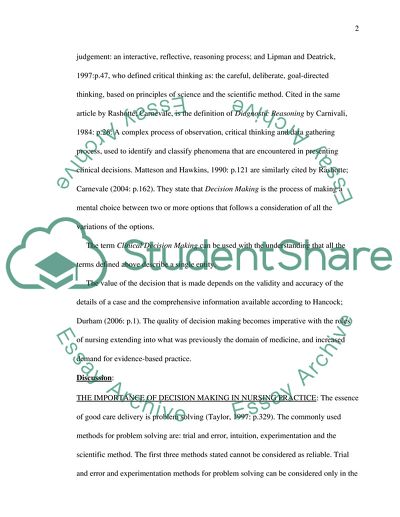Cite this document
(Clinical Decision Making in Nursing Case Study Example | Topics and Well Written Essays - 4000 words, n.d.)
Clinical Decision Making in Nursing Case Study Example | Topics and Well Written Essays - 4000 words. Retrieved from https://studentshare.org/health-sciences-medicine/1705921-explores-clinical-decision-making-in-nursing
Clinical Decision Making in Nursing Case Study Example | Topics and Well Written Essays - 4000 words. Retrieved from https://studentshare.org/health-sciences-medicine/1705921-explores-clinical-decision-making-in-nursing
(Clinical Decision Making in Nursing Case Study Example | Topics and Well Written Essays - 4000 Words)
Clinical Decision Making in Nursing Case Study Example | Topics and Well Written Essays - 4000 Words. https://studentshare.org/health-sciences-medicine/1705921-explores-clinical-decision-making-in-nursing.
Clinical Decision Making in Nursing Case Study Example | Topics and Well Written Essays - 4000 Words. https://studentshare.org/health-sciences-medicine/1705921-explores-clinical-decision-making-in-nursing.
“Clinical Decision Making in Nursing Case Study Example | Topics and Well Written Essays - 4000 Words”, n.d. https://studentshare.org/health-sciences-medicine/1705921-explores-clinical-decision-making-in-nursing.


